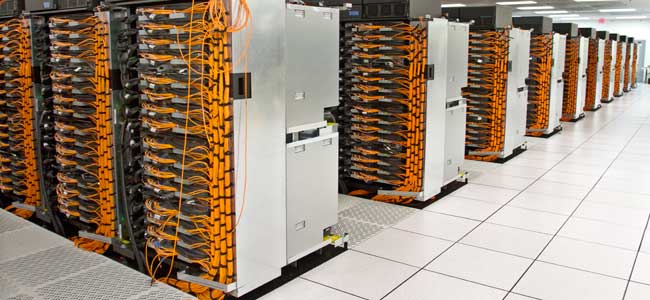Sequoia is the new world’s fastest supercomputer at 16 petaflops
June 19, 2012
Lawrence Livermore National Laboratory (LLNL)’s IBM Blue Gene/Q Sequoia supercomputer is the new world’s fastest high-performance computing system, at 16.32 sustained petaflops (quadrillion floating point operations per second), according to the Top500 list of the world’s fastest supercomputers.
For the first time since November 2009, a U.S. supercomputer tops the ranking.
A 96-rack system, Sequoia will enable simulations that explore phenomena at a level of detail never before possible. Sequoia is dedicated to to the The National Nuclear Security Administration’s (NNSA) Advanced Simulation and Computing (ASC) program for stewardship of the nation’s nuclear weapons stockpile, a joint effort by Lawrence Livermore, Los Alamos and Sandia national laboratories.
“The quantitative leap forward in computational power Sequoia represents will have a huge qualitative impact on the nuclear weapons calculations we will be able to conduct for stockpile stewardship. This capability is critical to the program to extend the life of such aging weapons systems as the B61 and W78 and will help to accelerate other NNSA research efforts such as fusion experiments at the National Ignition Facility,” said Bruce Goodwin, principal associate director for Weapons and Complex Integration.
On the latest Top500 list, Japan’s “K Computer” at the RIKEN Advanced Institute for Computational Science, is now the no. 2 system on the list with 10.5 petaflops.
Argonne National Laboratory’s new Mira BlueGene/Q system makes its debut at no. 3 on the list with a performance of 8.15 petaflops on the industry-standard Linpack benchmark.
Other systems in the top 10 include: SuperMUC, an IBM iDataplex system installed at Leibniz Rechenzentrum in Germany, at no. 4; China’s Tianhe-1A, no. 5; Italy’s IBM Bluegene/Q system installed at CINECA; Jaguar at Oak Ridge National Laboratory in Tennessee, no. 7; Germany’s JuQUEEN BlueGene/Q, no. 8; France’s Bull supercomputer, no. 9; and China’s Nebulae, no. 10.
